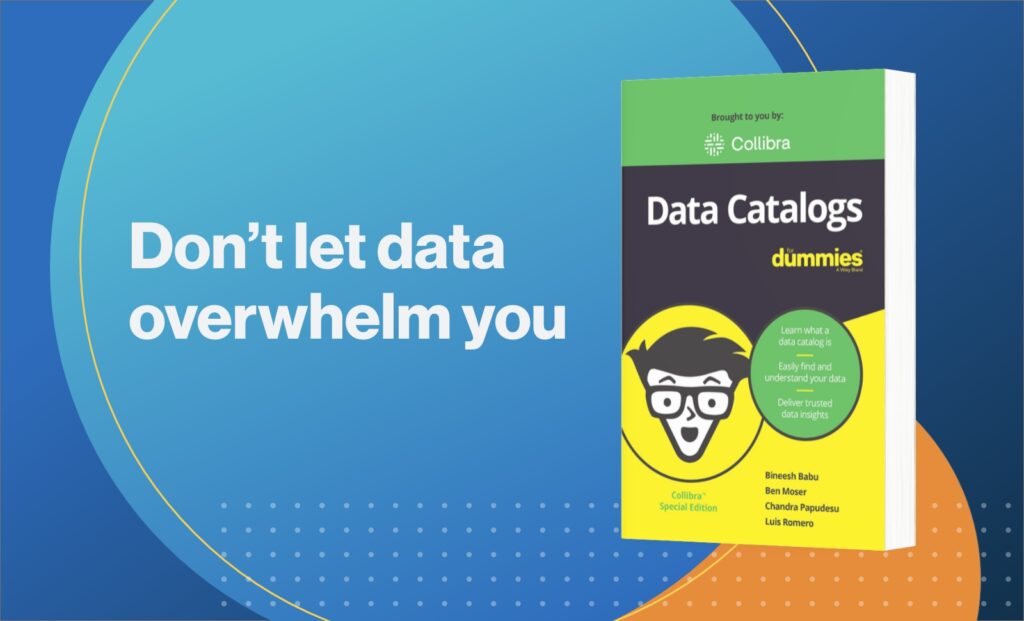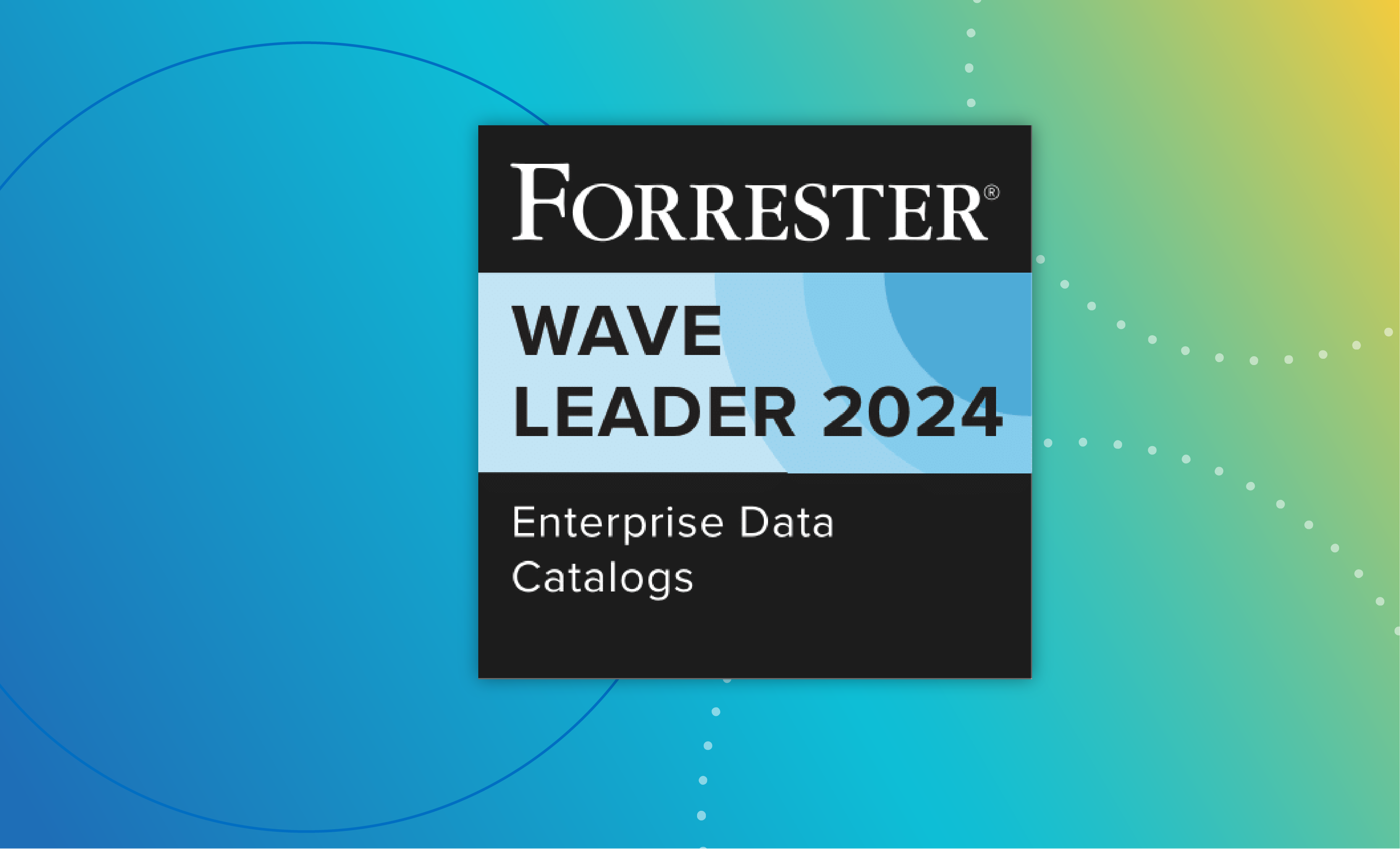Today, we’re thrilled to announce the publication of Data Catalogs For Dummies.
Commissioned by Collibra, Data Catalogs For Dummies provides an easy-to-read, comprehensive resource for data professionals looking to understand data catalogs better.
But what in fact is a data catalog? And what purpose does it serve in an enterprise? How do you find the right data catalog for your organization? How do you get the most out of your data catalog? How do you know if your data catalog is working? How can you enable data intelligence?
The answers to these questions are in Data Catalogs For Dummies.
The data challenge
In today’s data-driven world, enterprises are overwhelmed by the volume, variety, and velocity of data. You too may be experiencing difficulty creating and maintaining data pipelines. Do any of these challenges sound familiar?
- The need to create data pipelines to feed data visualization tools and ML models, and address the demand for immediately consumable data
- The demand for finding and accessing data sets, data elements and ML models for use in pipelines from different data sources, data domains, and data owners
- The lack of trusted sources. What data should be moved from an application to a data lake? Or from a data lake to an analytics database?
- The struggle with determining whether to reuse current data pipelines or create new ones
Given so many challenges, how can your organization become more data driven? It all starts with a data catalog.
Download your free copy of Data Catalogs For Dummies.
Enter the data catalog
As data has become the essential enterprise asset, the demand for more reliable data-driven decision-making has exploded.
And the demand isn’t slowing down or getting any smaller. You’re operating a multi-front battle to keep innovation moving and your teams developing, to manage your technology stack in a rapidly evolving market, to protect your data from breaches.
Enterprise data catalogs support enterprise metadata management and data governance across all data sources. But not all data catalogs are created equal.
Discover what type of data catalog is right for you. Download your free copy of Data Catalogs For Dummies.
Determining the right data catalog for your organization
A data catalog solution provides a great opportunity to take stock of your organization’s progress toward creating a data-driven decision-making culture.
But when determining the right data catalog, you’ll want to think about where your organization is in its data catalog journey. When you know where your organization is on the journey, then you’ll have a better idea of what data catalog is right for your business.
In Data Catalogs For Dummies, you’ll learn the data catalog journey is composed of three distinct phases:
- Crawl: What all data catalogs should have
- Walk: Data catalogs that include ownership and governance
- Run: Data catalogs that work for the enterprise
See where your company is on the Crawl, Walk, Run spectrum.
Hint: A good place to start is by defining the success metrics (or KPIs) that are most relevant to measuring your progress.
Maximizing the value of your data catalog
To get the most out of your data catalog, you don’t need to boil the ocean. Data prioritization is a key element of the data catalog journey.
When you’re creating your data catalog, you’ll want to focus on high-value, high-demand data. It doesn’t make sense to use resources to pull in data that won’t be utilized.
Your data governance and privacy programs are critical to protecting your business from a range of costly threats. But leveraging your data catalog to drive data governance and privacy is new to your business. So how do you get maximum value out of your new data catalog?
Making the most of your data catalog with a data intelligence platform
Your data catalog journey has a destination. You’re transforming your company into a data intelligence company.
But what is data intelligence? Data intelligence is a strategy for maximizing the value of your existing investments in data management solutions by enabling discovery and access at every point of data movement across your organization.
Your data catalog is the heart and soul of data intelligence.
A robust catalog can connect not just to data sets but also analytical assets such as reports/dashboards. If the catalog is well-designed, it can also connect with other departmental catalogs (becoming the ‘catalog of catalogs’).
Once cataloged, the data assets can be enriched further to enable multiple use-cases ranging from governance/privacy to operations (and all the way to data observability).
Data intelligence is the only thing that can connect all your data assets together.
Ready to start your data intelligence journey? Download your free copy of Data Catalogs For Dummies.
How to know when your data catalog is working for you
Once you’re using your data catalog, how do you know it’s working? Measuring success doesn’t have to be complicated.
You’ll want to start by defining clear success metrics, otherwise known as key performance or KPIs). These metrics make it clear to everyone — your team, your managers, and your broader organization — that you’re making progress against your goals for your data catalog and your business.
A good way to begin is by creating a list of questions that can be the basis for your KPI dashboard. The questions could include:
- Is your data catalog adding value to the organization?
- Is your data catalog a reliable source for all data-related questions?
- Is your data catalog platform helping users make data-driven decisions?
- Are you improving end-user adoption?
- Does your data catalog platform present a single pane for data discovery?
Download Data Catalogs For Dummies now to get even more insights into understanding data catalog success.
Seven steps to data intelligence with a data catalog
It doesn’t have to be hard to get to data intelligence. But you do need a plan.
Here are the essential steps as outlined in Data Catalogs For Dummies:
- Support the entire enterprise
- Connect to all your data
- Enable automation at scale
- Gain visibility with data lineage
- Drive trust with collaboration
- Embed data governance and privacy
- Establish a data marketplace
Data Catalogs For Dummies covers a lot of ground.
You’ll understand the power of data catalogs. You’ll learn how to find the right data catalog for your organization, how to maximize your data catalog, and how to get to a data intelligence platform. And you’ll learn how to know when your data catalog is working for you. Best of all, you’ll be on the road to data intelligence.




